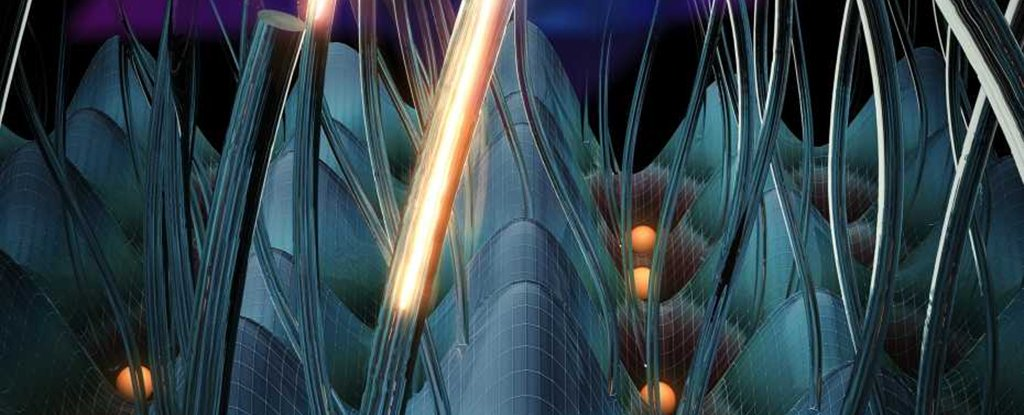Experiments Show The Effects of a Fourth Spatial Dimension
Wow.
DAVID NIELD
6 JAN 2018
We're used to dealing with three physical dimensions and one extra dimension of time as we move through the Universe, but two teams of scientists have shown that a fourth spatial dimension could reach beyond the limits of up and down, left and right, and forwards and backwards.
As you might expect given this is bending the laws of physics, the experiments involved are partly theoretical and very complex, and touch on our old friend quantum mechanics.
By placing together two specially designed 2D setups, two separate teams of researchers - one in Europe and one in the US - were able to catch a glimpse of this fourth spatial dimension through what's known as the quantum Hall effect, a certain way of restricting and measuring electrons.
"Physically, we don't have a 4D spatial system, but we can access 4D quantum Hall physics using this lower-dimensional system because the higher-dimensional system is coded in the complexity of the structure," a researcher with the US-based team, Mikael Rechtsman from Penn State University, told Ryan F. Mandelbaum at Gizmodo.
"Maybe we can come up with new physics in the higher dimension and then design devices that take advantage the higher-dimensional physics in lower dimensions."
In other words, just as a 3D object casts a 2D shadow, scientists have managed to observe a 3D shadow potentially cast by a 4D object – even if we can't actually see the 4D object itself. That could unlock some new findings in the very fundamentals of science.
Thanks to some rather advanced calculations – which won the Nobel Prize for Physics in 2016 – we know that the quantum Hall effect points to the existence of a fourth spatial dimension.
What these new experiments do is give us a picture of the effects that this fourth dimension might have.
The European team's setup involved atoms cooled down close to absolute zero and placed in a 2D lattice through the user of lasers, described as "an egg-carton-like crystal of light" by the researchers.
With the addition of extra lasers, the team was able to implement a quantum "charge pump" to excite the trapped atoms and get them moving. Slight variations in the movement spotted by the researchers match up with how a 4D quantum Hall effect would ripple out – adding weight to the possibility that a fourth spatial dimension can be somehow accessed.
The US experiment also used lasers, this time to control light as it flowed through a block of glass. By manipulating the light to simulate the effect of an electric field on charged particles, again the consequences of a 4D quantum Hall effect could be observed.
Of course, we can't physically access this 4D world – we're stuck in 3D space – but scientists think quantum mechanics could somehow give us a picture of it, thus enhancing our limited understanding of the Universe.
Another way to think about it, courtesy of this video, is if we were video game characters from a 2D platform, and suddenly wandering around in a 3D game. Our perspective would stay 2D, but as we moved around we would see distortions and flips as the 3D world was folded into a 2D plane.
The same kind of distortions have been shown in this study, hinting at a bigger 4D world outside what we can see right now.
So we can't take a trip to the fourth spatial dimension just yet – but we've got more evidence that it's out there, and a better idea how how it works.
The team of researchers now wants to build on these studies to take a closer look, and to maybe explore some even more advanced physics along the way.
"I think that the two experiments nicely complement each other," one of the European researchers, Michael Lohse from the Ludwig-Maximilians University in Germany, told Gizmodo.

Hi! I am a robot. I just upvoted you! I found similar content that readers might be interested in:
http://grendz.com/pin/6186/